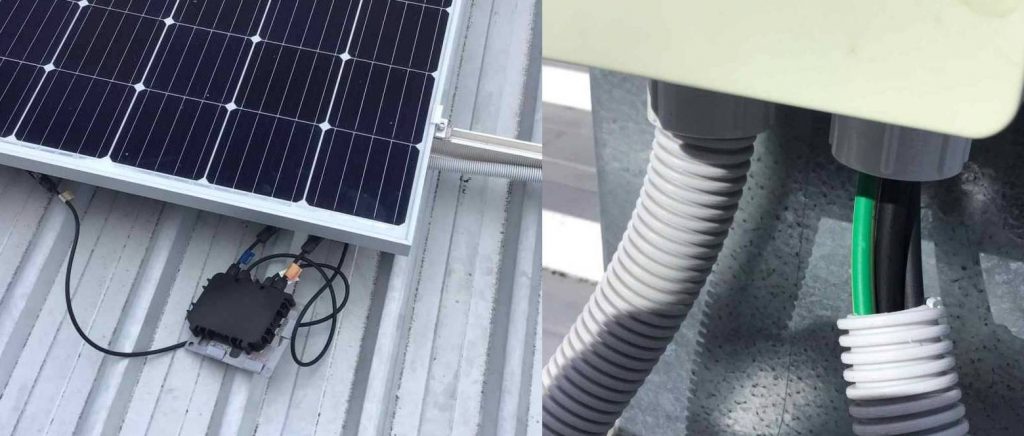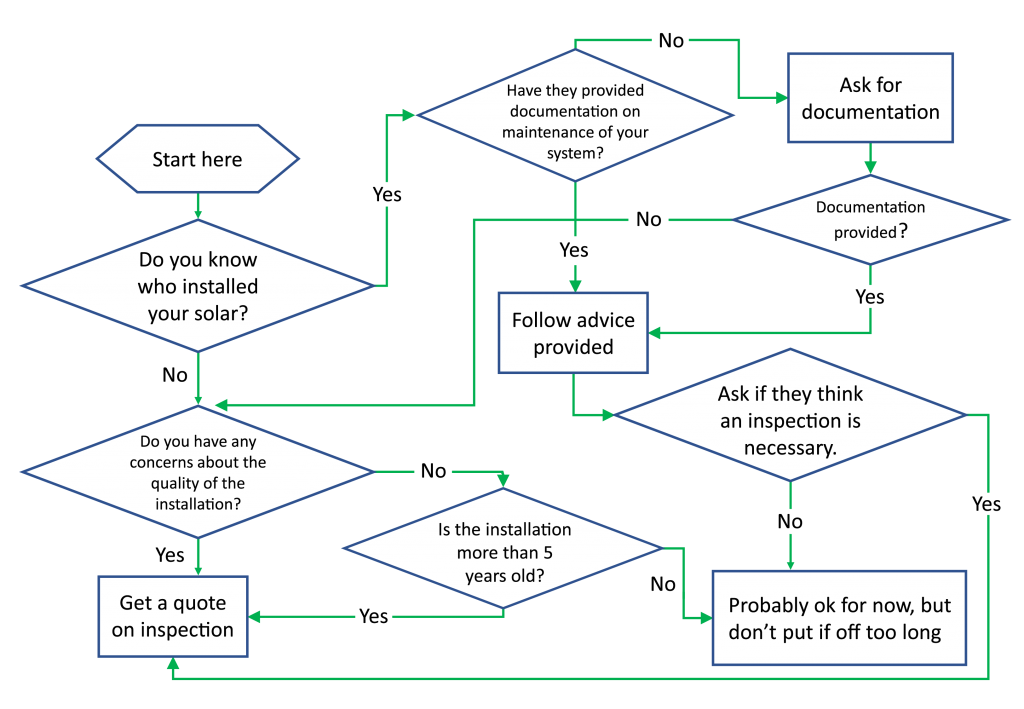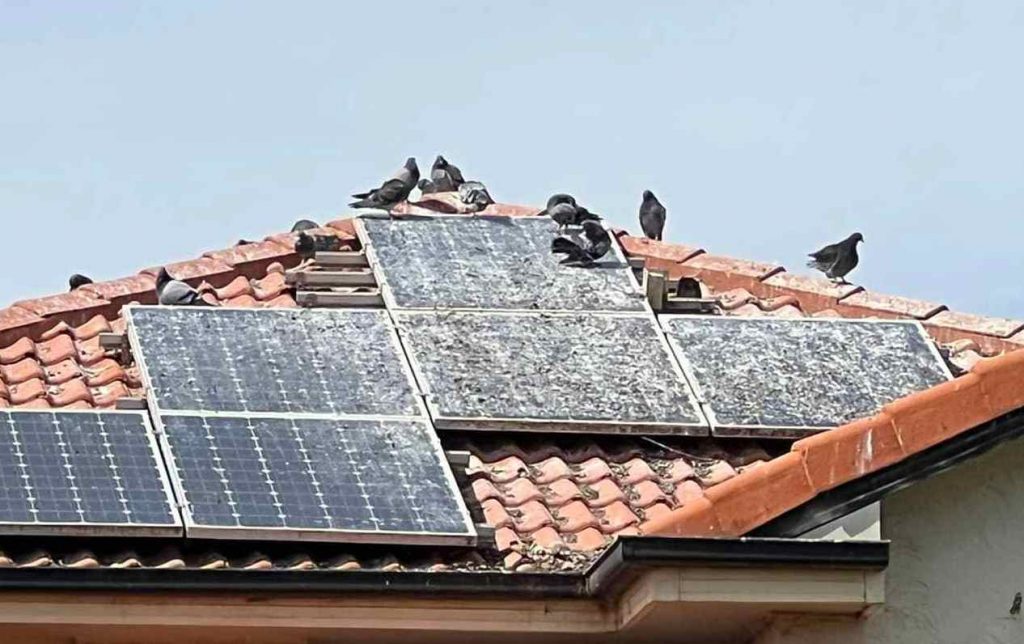[you can also download a PDF of this advice]
Solar owners in Tasmania have been posted a leaflet from the electrical safety section of the Department of Justice suggesting that solar photovoltaic (PV) installations should be inspected as often as yearly. (You can read their advice here.) Is this necessary and should you do it?
Why should I get an inspection?
There are two main reasons for inspecting solar PV; for electrical safety and to check that the system is performing as it should.
Any electrical system that suffers from deterioration or damage can be a safety hazard. Solar PV systems work at high voltages (up to 1000 volts) and are directly exposed to UV radiation, wind and rain so there are potential hazards if the system is not installed properly or has suffered damage or deterioration.
Is my system performing?
The best way to know if your solar PV is performing as intended is to install monitoring such as Solar Analytics.
If you don’t want to pay for monitoring, most inverters (the box on the wall that converts your solar to 230 volts) will indicate how much your system has generated in the last day. As a very rough guide, use the kilowatts of installed capacity of your system (if you don’t know the figure, divide the number of panels on your roof by four). In Tasmania each kilowatt of installed PV will generate a daily average of about 1.2 kWh in June and 6 kWh in January. These figures assume your panels are facing roughly north and are tilted and do not experience significant shading.
The kWh of the feed-in tariff on your electricity bill will also provide a rough guide to whether your system is working but is also affected by how much of your solar you use yourself rather than export.
Signs you might need an inspection
An inspection of your solar installation is more likely to be justified if:
- The system is more than a few years old, especially if you are not in contact with the original installer.
- There are visible signs of problems (drooping cables, signs of water damage, debris around or under the panels, loose or missing fittings). (Only if you can safely check yourself.)
- You are in a higher risk location (eg subject to sea spray, strong wind location)

Loose or unprotected cables are a sure sign of poor installation.
Photos: cbos.tas.gov.au
Should I get an inspection?

How do I get a quote for an inspection?
A list of TREA members who can give you a quote for an inspection is at http://tasrenew.org.au/members
It may be necessary for the electrician to visit your site before being able to give a firm quote for the inspection service.
Don’t try this at home
We do not recommend DIY inspections unless you are in the fortunate position to be able to get a good look at your system from ground level. As well as the general dangers of climbing on roofs, the high voltages associated with PV system provide an extra risk if wiring or components are damaged.
Should I get my panels cleaned?

Solar panels that slope at more than 10 degrees are generally self-cleaning in the rain. Unless there is obvious dirt build up, the cost of getting panels cleaned is almost certainly greater than any savings from improved performance. Attempting to wash panels yourself (either from the roof or with a hose from the ground) has its own safety risks.
Sometimes panel cleaning is justified
Photo: Peter Prcevich
More information
Solar energy systems (solar panels): Inspections and maintenance, web page by Consumer, Building and Occupational Services in the Tasmanian Department of Justice. It includes a link to their suggested checklist.
Is Solar Panel Cleaning A Waste Of Time And Money? Ronald Brakels, 27 Sep 2016
Solar Power System Inspections – How Often And How Much? Michael Bloch, 15 Sep 2021
If your are keen and can do it safely, here is some advice on DIY cleaning.
